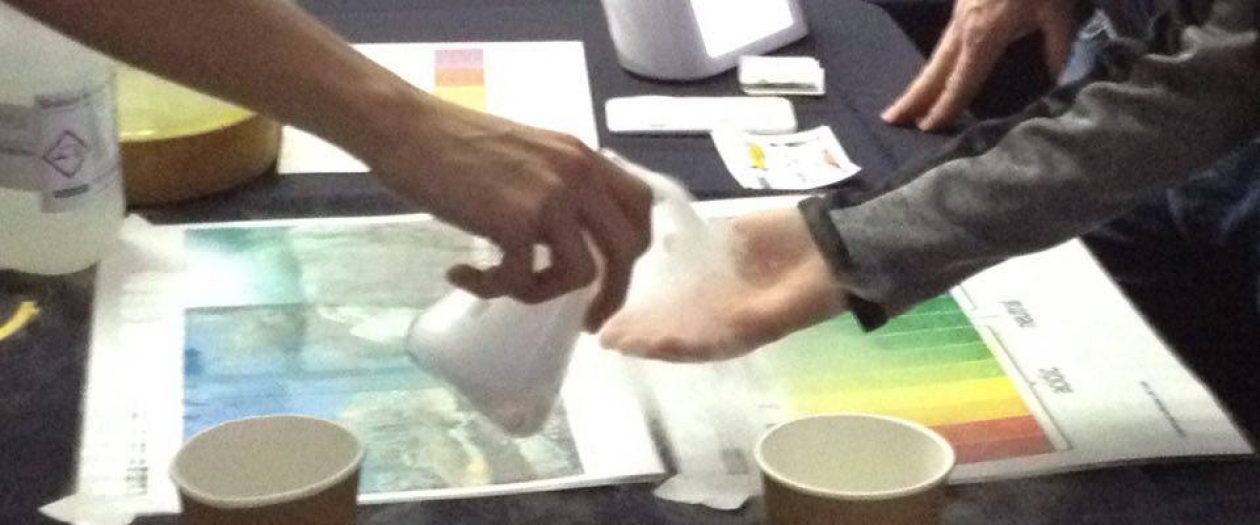Dear imaginary readers,
I’m to be blamed for neglecting my blog for so long. I hope you will forgive me. Today, the 6th of January, is a bank holiday in Italy, celebrating a nice lady who comes on a broomstick (for that reason someone says she is a witch), to deliver sweets and small gifts. She is known as Befana. In her honor, I will offer you a story that I would label as “image’s plagiarism“. The female figure I’m going to talk about is not an imaginary person and not a witch. On the contrary she is one of the most famous and important scientist of the history, even though she uncovered properties of elements that have special, nearly magic properties.
Let me introduce her by a photo.
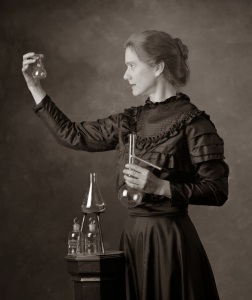
I’m sure a big part of you are very confident in their answer. Marie Curie. Well, actually, the person in the picture is not Marie Curie, even though the scene, dress style, background and glassware were modeled after a famous Marie Curie’s picture taken in 1912.
The photographer who snapped the photo in 2001 is Paul Schroder, and the model is Susan Marie Frontczack, a professional storyteller and actress, who travelled across the US for 13 years to perform her monologue “Manya. The living History of Marie Curie”.
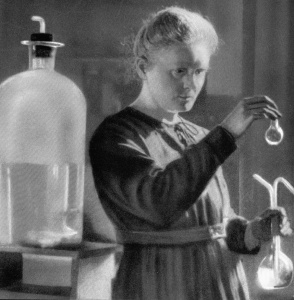
There is nothing wrong with this picture. The problem is that the image was used as stamp’s theme in many different African countries, such as Togo, Zambia, and Republic of Guinea, in order to celebrate the famous Polish scientist.
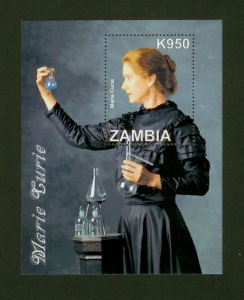
Susan Marie Frontczack has mixed feeling about the stamps. From a certain point of view they prove that she does good job as an actress, on the other hand she is not happy about the use of the picture without permission.
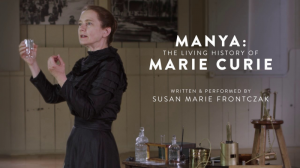
She explained the purpose of her work in the following interview, released for the Chemical Heritage Foundation.
Actress and storyteller Susan Marie Frontczak visited CHF in April as part of the first-ever Philadelphia Science Festival. Her one-woman show, Manya: A Living History of Marie Curie, depicts the life of the Nobel laureate from childhood to the discovery of radium. Frontczak left an engineering job at Hewlett-Packard to pursue storytelling and theater. Since 2001 she has transformed herself into such historical figures as Eleanor Roosevelt, Mary Shelley, and Irene Castle for audiences around the world. Before her performance Frontczak spoke with Chemical Heritage’s Anne Fredrickson about her craft.–AF
AF: What first attracted you to Marie Curie’s story?
SMF: When I was nine or ten years old, I read a juvenile biography of Marie Curie that had an image of her with a whole mountain of rock, with her digging through it to get this tiny little piece of radium. That image really stuck with me; even then I admired her perseverance.
AF: You’ve said that it can take two to three years to develop your living-history characters. What was the process for Manya?
SMF: I wrote the script based on her writings, her letters, her vocabulary, and my understanding of her life. I went to Paris. I got permission through her granddaughter to look at the archives, hold her lab book, and look through her letters. And I read everything I could get my hands on. Historical accuracy is of high importance to me. I wanted the piece to be scientifically accurate but also understandable to nonscientists. I wanted people to realize, “Oh, this was a real human being.”
I also had to figure out my own justification for Marie Curie to stand up and talk to an audience for forty minutes or two hours. It’s not the kind of thing she would volunteer to do. That’s why Manya is set in 1915. During the war Curie actually solicited funds from people—not 100 or 300 or however many there are in my audiences—but from a handful of people sitting in a parlor. I pretend [the crowd is] this handful of people, there to help support the Red Cross and its mobile X-ray units, which Marie Curie helped develop. I let that be the framework: “You said you’d come to this fundraiser so long as I tell you my story. All right, I’ll tell you my story.” That’s an artifice, but through that framework we go back in time with her.
AF: Are there other aspects of her life you hope people will take away from your performance?
SMF: Different themes run through the show—and they speak to different people. Some people, for example, don’t know she was Polish. They walk away thinking, “Gee, I had always thought she was French.” Some people pick up on the fact that she was a lifelong teacher, and some notice more personal themes: her constant struggle for laboratory space or the fact that the Curies did not like being famous. Marie Curie wrote that their “lives were altogether ruined by honors and fame.”
AF: Your performances draw scientists, nonscientists, families. How do you manage such mixed audiences?
SMF: When my audience includes children, I make the program more interactive. And there are always some lovely ways in which the audience members inform each other. I love having scientists, especially chemists, in the audience. There is an excerpt from Curie’s writings that I paraphrase in the show: “We used the adjoining yard for chemical operations that produce clouds of hydrogen sulfide and other irritating gases. But when it rained, we brought these inside.” To the nonscientist it sounds very matter of fact. But as soon as I say “clouds of hydrogen sulfide,” the chemists in the audience groan. That lets the people who aren’t chemists know that it was dangerous and that she didn’t regard the danger. Having that mix in the audience means they really teach each other without realizing it.
From the Chemical Heritage Foundation magazine, August 15, 2011.
In the future she would like to turn her one woman show in a movie. I wish her dream would become real soon!
